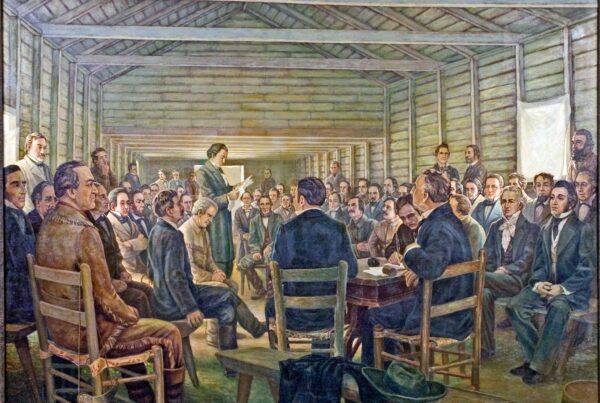In the 18th century, Spain launched the Bourbon Reforms, a sweeping set of political, economic, military, and religious policies directed at modernizing its empire. Named after the Bourbon dynasty that came to power after 1700, these reforms aimed to centralize authority, improve efficiency, and counter growing challenges from Britain, France, and internal unrest.
Though New Spain (Mexico) was the administrative core of Spain’s American territories, the effects of these reforms rippled outward, reaching the frontier regions—including Spanish Texas—and helping shape long-term institutional development in the region.
Why Spain Reformed
Following the War of the Spanish Succession (1701–1714), Spain emerged with a new royal family—the Bourbons—and a weakened empire. Britain had gained naval dominance, and France was challenging Spain’s influence in the Americas. Meanwhile, Spain’s colonial system was bloated, inefficient, and dependent on local elites who often governed with little oversight.

Enlightenment-inspired ministers within the Spanish court, such as José de Gálvez, began pushing for top-down reforms to restore imperial control. These efforts sought to curb the power of locally entrenched criollo elites and place more authority directly into the hands of royal appointees, especially Spaniards born in Europe (peninsulares).
Administrative Overhaul: Provincias Internas
One of the most significant administrative changes came in 1776, when the northern provinces of New Spain—including Texas, New Mexico, Coahuila, and Sonora—were reorganized into a semi-autonomous jurisdiction called the “Provincias Internas.” This new structure allowed frontier regions to report directly to a military commander rather than the distant viceroy in Mexico City.
The first effective commander, Teodoro de Croix, was tasked with overseeing everything from military defense to trade enforcement and governance across this vast, sparsely settled region. Though communication and resources remained limited, the Provincias Internas marked a shift toward more responsive and centralized frontier management.
Military Reforms in the North
Defense was a central concern of the Bourbon Reforms. The northern frontier faced continual threats from hostile Indigenous groups such as the Apache and Comanche, as well as encroachment from French and British rivals.
The Spanish Crown ordered a broad reorganization of the presidio system, which consisted of fortified military outposts. In Texas, key presidios included San Antonio de Béxar, La Bahía (present-day Goliad), and Los Adaes. An inspection led by the Marqués de Rubí between 1766 and 1768 resulted in the Royal Regulation of 1772, which recommended abandoning remote and costly outposts like Los Adaes and instead concentrating defenses closer to the interior.
These reforms also formalized the use of militias, or citizen-soldier forces, to supplement royal troops. These militias were often made up of settlers and ranchers and would later influence the formation of paramilitary and frontier defense organizations in Texas.
Economic Liberalization
The Bourbon monarchs also worked to overhaul Spain’s outdated economic system. For centuries, colonial trade had been rigidly controlled, with commerce limited to select ports and heavily taxed. This stifled local economies and encouraged widespread smuggling.
In the late 1770s, Spain issued a series of trade liberalizations, culminating in the Free Trade Decrees of 1778, which allowed for intercolonial shipping and reduced restrictions on commerce. While the benefits in remote Texas were modest, the new rules made it easier for settlements to obtain food, tools, and livestock from places like Louisiana and central Mexico.
The reforms also encouraged growth in ranching and agriculture. Spanish Texas, with its open terrain and grazing land, saw an increase in cattle production, particularly in regions surrounding Béxar and La Bahía. This marked the beginning of a ranching culture that would later define much of Texas’s economic identity.
Religious Realignment and Mission Closures
The Catholic Church had long played a powerful role in Spanish America, especially in frontier areas where missions served as tools of both conversion and colonization. Under the Bourbon Reforms, the Crown began asserting greater control over the Church. In 1767, the Jesuits were expelled from all Spanish territories, and royal authority over other religious orders was strengthened.
In Texas, this led to the reassessment of mission effectiveness. Missions that had failed to attract or retain Indigenous converts—such as those in East Texas—were closed. Resources were redirected to more productive missions near military posts or growing civilian towns.
This gradual secularization of the frontier helped shift power away from missionaries and toward civilian and military officials. Towns like San Antonio increasingly became centers of administration and commerce, reducing the dominance of the mission system in daily life.
Reforms on the Texas Frontier
While Texas was far from the major trade routes and administrative centers of New Spain, it felt the effects of the Bourbon Reforms in several ways:
- Administrative realignment under the Provincias Internas gave Texas more responsive, military-led governance.
- Presidio restructuring and the closure of Los Adaes led to population shifts and consolidation in places like San Antonio.
- Economic reforms encouraged cattle ranching and enabled limited trade with Louisiana, supporting fragile frontier communities.
- Religious reform shifted influence away from missions and toward civil settlements and town councils.
These changes helped lay the institutional foundation for later civic and legal structures in Texas, even as they exposed the limits of Spanish power in the region.
Long-Term Relevance to Texas History
The Bourbon Reforms had a lasting impact on the political, economic, and cultural development of Texas. They introduced the idea of centralized military governance, created administrative boundaries that would influence later state lines, and fostered civilian economies that could stand independently of the mission system.
They also contributed to long-term tensions. Many American-born elites resented the increased presence of peninsular Spaniards in government, and settlers chafed under new trade regulations, taxes, and enforced bureaucracies. These frustrations fed into the broader currents of discontent that led to Mexican independence in 1821.
In Texas, the legacy of the Bourbon Reforms persisted. The frontier military structure evolved into local militias and defense groups. Civil governance established in presidio towns laid the groundwork for Texas municipalities. And the experience of being governed from afar helped foster a political culture skeptical of central authority—an attitude that would resurface in both the Mexican war of independence and the Texas Revolution.


